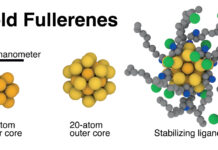
Photo by Travis Ross, Beckman Institute
CHAMPAIGN, Ill. — University of Illinois engineers built a 3-D printer that offers a sweet solution to making detailed structures that commercial 3-D printers can’t: Rather than a layer-upon-layer solid shell, it produces a delicate network of thin ribbons of hardened isomalt, the type of sugar alcohol used to make throat lozenges.
The water-soluble, biodegradable glassy sugar structures have multiple applications in biomedical engineering, cancer research and device manufacturing.
“This is a great way to create shapes around which we can pattern soft materials or grow cells and tissue, then the scaffold dissolves away,” said Rohit Bhargava, a professor of bioengineering and director of the Cancer Center at Illinois. “For example, one possible application is to grow tissue or study tumors in the lab. Cell cultures are usually done on flat dishes. That gives us some characteristics of the cells, but it’s not a very dynamic way to look at how a system actually functions in the body. In the body, there are well-defined shapes, and shape and function are very closely related.”
The machine prints free-form, the melted sugar hardening in the air as it prints.
Video courtesy of Matthew Gelber
In a paper published in the journal Additive Manufacturing, the research group described the materials and mechanics of free-form isomalt printing. Free-form means that as the nozzle moves through space, the melted material hardens, leaving a sturdy structure behind – like drawing in midair.
Read more: 3-D printed sugar scaffolds offer a sweet solution for device manufacturing
Images courtesy of illinois.edu











